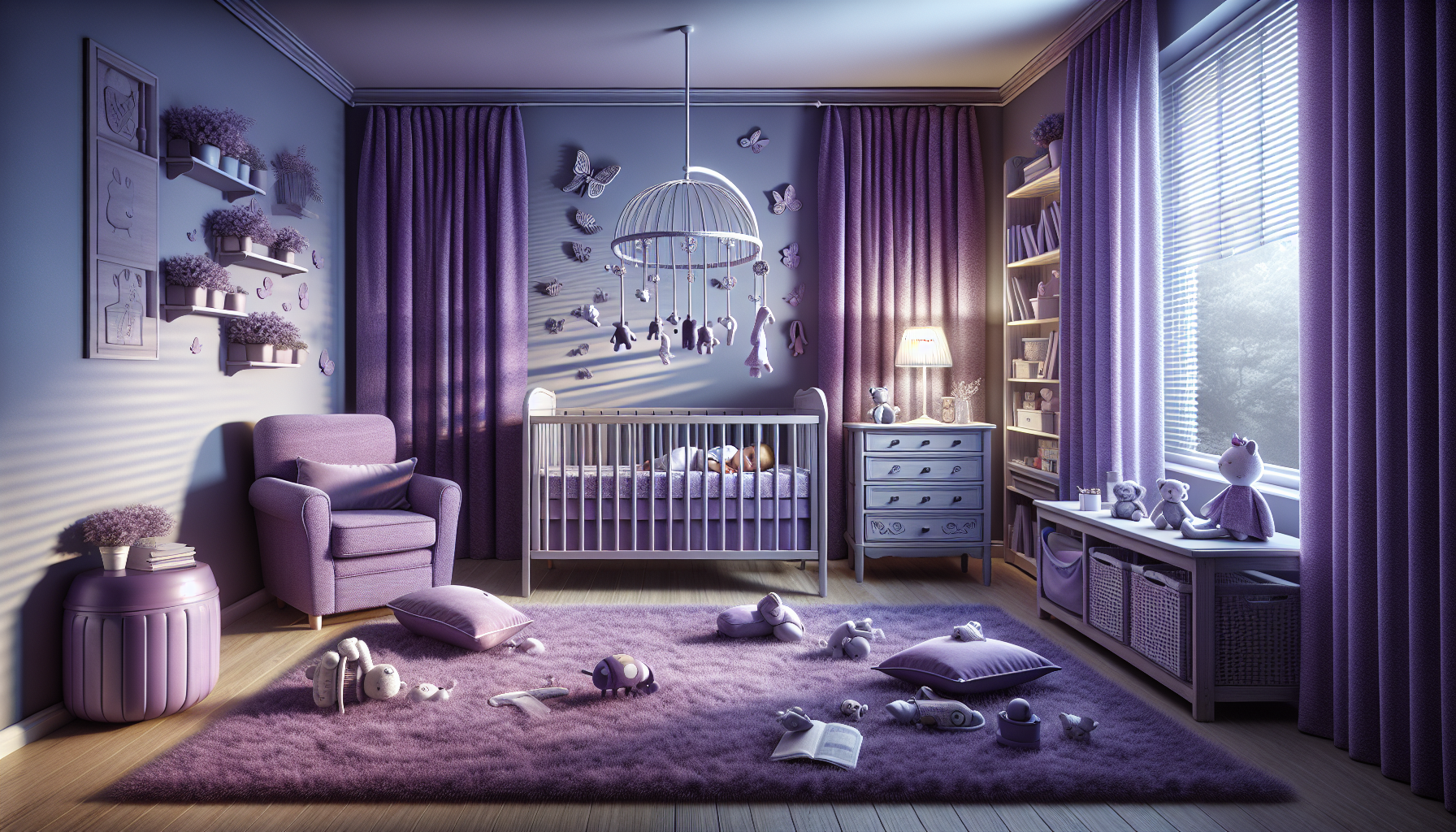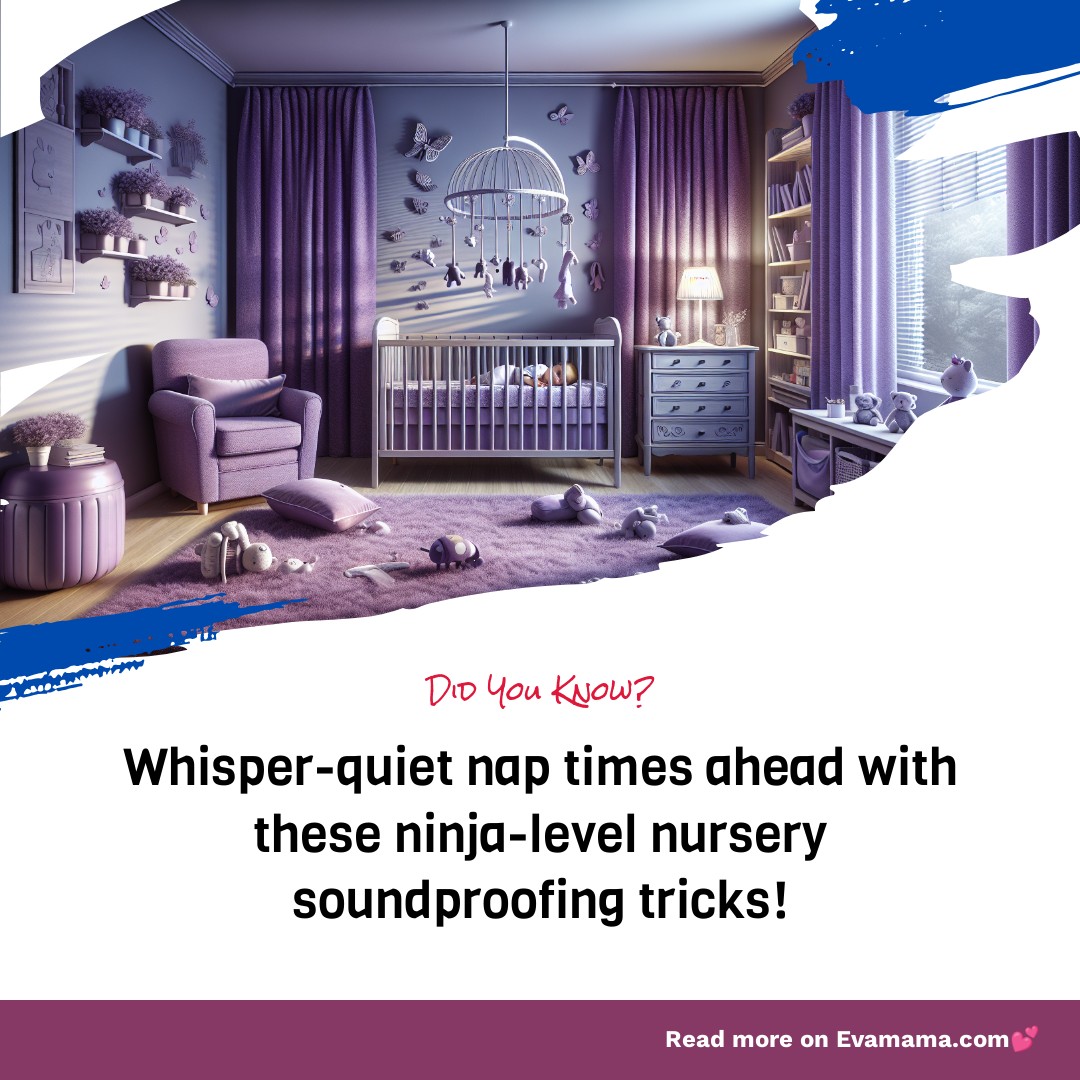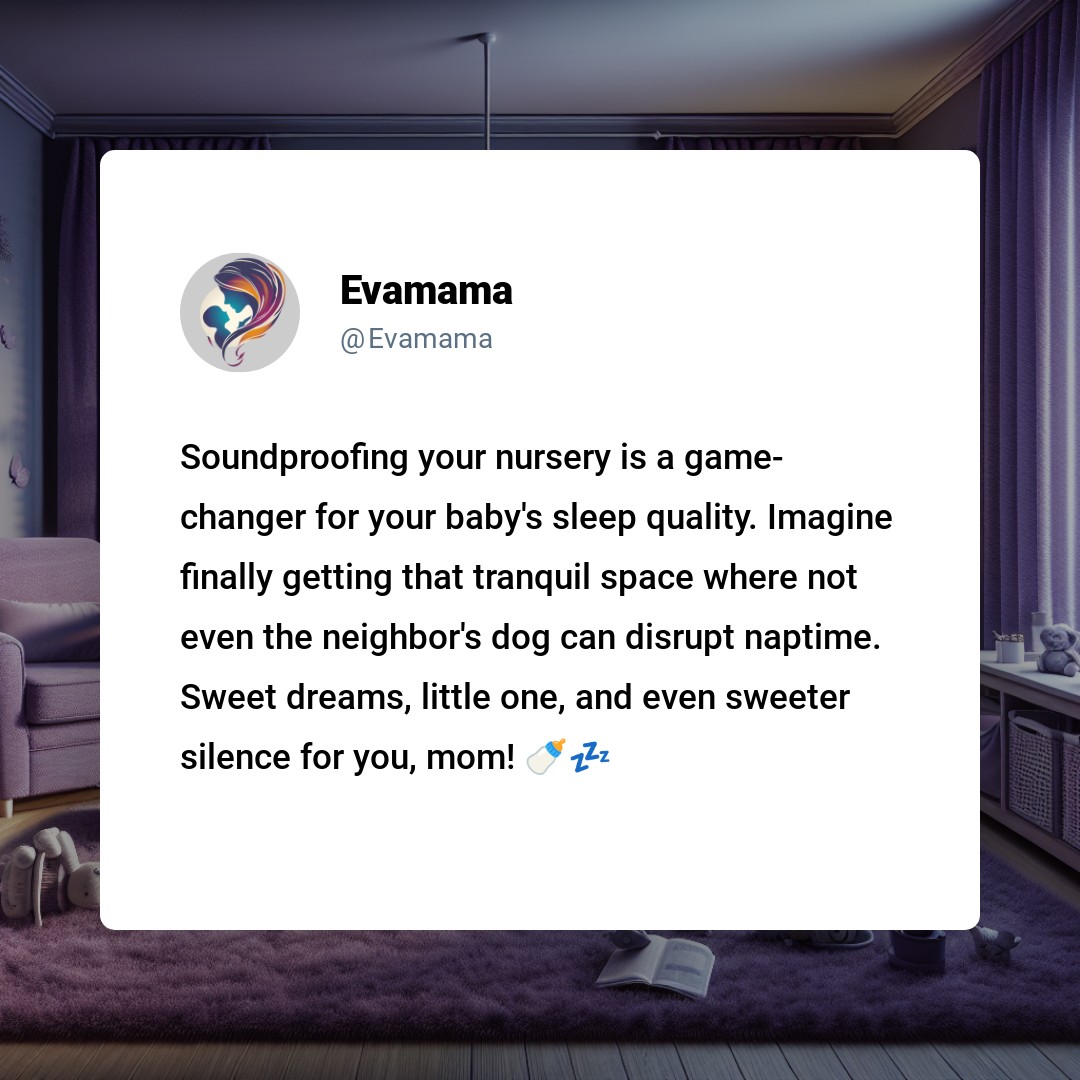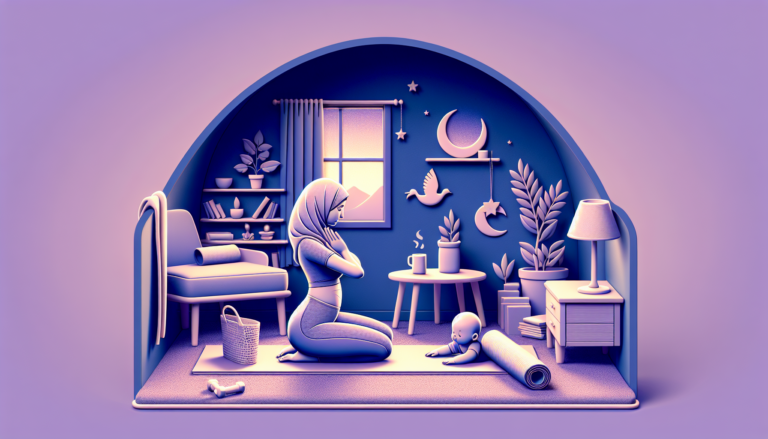Soundproofing Your Nursery: A Moms Guide to Serene Spaces
Soundproofing your nursery is a game-changer for your baby’s sleep quality. Imagine finally getting your little one to sleep, only for a car alarm or a neighbor’s footsteps to shatter the silence. It’s the kind of frustration that can drive any parent to the brink of desperation.
That moment of disruption is precisely what we’re here to prevent. With a few strategic tweaks, your nursery can become a bastion of calm, even amidst the chaos of the outside world.
I’ve been where you are, awake at 3 AM, searching for solutions while my baby stirred at every creak and honk. Through my own journey, I’ve gathered the wisdom to transform your nursery into the peaceful sanctuary you and your baby deserve. Let’s dive into the techniques that will help you reclaim the quiet.

Creating a Haven of Quiet: Soundproofing Your Nursery

Imagine this: a peaceful nursery where the gentle cooing of your baby is the only sound you hear. No traffic noise, no neighbor’s dog barking-just tranquility. Sound like a dream? It’s not. With the right soundproofing techniques, you can create a serene environment for your little one to sleep and grow. Let’s decompose how to make this dream a reality.
The First Line of Defense: Soundproof Curtains
Drapes of Silence: Heavy, dense curtains are your first ally in the battle against noise. When you hang these from wall to wall, they act as a barrier, absorbing sound waves that try to invade your nursery. Look for curtains labeled as ‘soundproof’ or ‘thermal’ for the best results.
Layer Up for Quiet: Don’t stop at one layer. Double up those curtains or add a blackout liner for extra sound-muffling power. The more layers, the better the noise reduction. It’s like wrapping your nursery in a cozy, sound-absorbing blanket.
Soft Surfaces: Carpets and Rugs
Plush Protection: A thick carpet or a plush rug isn’t just soft underfoot; it’s a sound absorber. The dense fibers catch sound waves, preventing them from bouncing around the room. Opt for a high-pile rug or a carpet with a thick pad underneath for maximum soundproofing.
Strategic Placement: If wall-to-wall carpeting isn’t an option, strategically place rugs where noise is most likely to intrude. A large rug under the crib, for example, can make a significant difference.
Fabric Tactics: More Than Just Decoration
Cushion the Sound: Pillows, upholstered furniture, and even plush toys can contribute to a quieter nursery. These soft items absorb sound, reducing echo and creating a more muted atmosphere.
DIY Sound Panels: Create your own sound-absorbing panels with fabric-wrapped acoustic foam. Hang these on the walls for a decorative touch that doubles as a sound barrier.
Windows and Doors: Sealing the Gaps
Window Wisdom: Your nursery’s windows can be a major source of noise leakage. Consider adding weather stripping or acoustic seals to the frames. For a more substantial fix, invest in double or triple-pane windows designed to reduce sound transmission.
Doorway to Silence: Don’t forget the door! A solid-core door blocks more sound than a hollow one. Add a door sweep or a draft stopper to seal the gap at the bottom, keeping noise at bay.
The Role of White Noise
Consistent Calm: Sometimes, the best way to counteract noise is with more noise-specifically, white noise. A white noise machine can mask disruptive sounds with a consistent, soothing hum, helping your baby sleep undisturbed.
Appropriate Volume: Keep the white noise at a safe volume, around 50 decibels, to protect your baby’s delicate ears while effectively masking unwanted sounds.
Soundproofing on a Budget
Get Creative: Soundproofing doesn’t have to break the bank. Look for second-hand curtains, rugs, and furniture that can serve as sound barriers. Even a bookshelf filled with books can act as an impromptu sound-absorbing wall.
Prioritize Your Efforts: Focus on the noisiest areas first. If the street-side window is the main culprit, start there. You can always add more soundproofing elements over time as your budget allows.
The Final Touch: Seals and Sweeps
| Area to Soundproof | Product to Use | Expected Noise Reduction |
|---|---|---|
| Windows | Acoustic seals | Moderate |
| Doors | Door sweeps | High |
| Walls | Fabric panels | Moderate to High |
| And so Room | White noise machine | Moderate to High |
This table gives you a quick reference to the soundproofing techniques we’ve discussed.
To run faster, you have to train. To quiet a nursery, you must layer, seal, and soften. Each technique we’ve covered is a step toward that goal. Start with what you can and build from there. Your baby’s peaceful sleep-and your peace of mind-are well worth the effort.
Crafting a Haven of Serenity: The Art of Nursery Soundproofing

Imagine stepping into a nursery where the hustle and bustle of the outside world fades away, leaving only a cocoon of calm for you and your baby. This isn’t just a dream; it’s achievable with thoughtful design choices that cater to both the aesthetics and the acoustics of the space. Let’s plunge into this journey to create a tranquil nursery atmosphere together.
The Palette of Peace: Choosing Colors for Calm
The colors that surround us have a profound impact on our mood and well-being. For your nursery, think of hues that evoke serenity and relaxation. Soft, neutral colors like pastel blues, gentle greens, and warm beiges are not just trendy; they’re timeless. These shades are known for their calming effect, making them ideal for a restful nursery environment.
A Symphony of Light: Balancing Natural and Accent Lighting
Lighting plays a pivotal role in setting the right tone for your nursery. During the day, allow natural light to filter in, creating a warm and inviting space. As the sun sets, transition to soft, accent lighting. Consider dimmable LED lamps that can be adjusted to the perfect brightness, ensuring a gentle transition to sleep for your little one.
The Texture of Tranquility: Textiles That Soothe
Textiles add layers of comfort and can significantly influence the room’s acoustics. A plush wool rug not only feels heavenly underfoot but also absorbs sound, reducing echoes. Upholstered furniture, with its soft edges and padded surfaces, contributes to the quietude. For the windows, opt for heavy drapes that can muffle outside noise while adding a touch of elegance.
The Lullaby of White Noise: Embracing Sound Machines
In the sphere of sleep aids, the Marpac Dohm Baby Sound Machine is a standout. Its soothing hum is akin to a lullaby, masking disruptive noises that might startle your baby. White noise creates a consistent auditory backdrop, promoting deeper and more restful sleep. It’s a simple yet effective tool in your soundproofing arsenal.
Soundproofing with Style: Aesthetic Meets Function
Soundproofing doesn’t have to mean compromising on style. There are creative ways to integrate sound-absorbing materials that enhance the nursery’s look. Consider decorative acoustic panels that can be customized to match your decor. Even bookshelves filled with soft-covered books can serve as an attractive and functional barrier to noise.
The Quiet Corner: Creating a Dedicated Space for Slumber
Designate a corner of the nursery as the sleep sanctuary. This area should be the focal point of your soundproofing efforts. Place the crib away from noisy windows and doors, and surround it with soft furnishings that can absorb sound. This will be the heart of tranquility within the nursery, a special spot where your baby knows it’s time to rest.
The Soundproofing Checklist: Ensuring Every Detail is Covered
To ensure you’ve covered all bases, here’s a quick checklist for your nursery soundproofing project:
- Color Scheme: Neutral and pastel tones for a calming effect.
- Lighting: Natural light for daytime, dimmable accent lighting for night.
- Textiles: Wool rugs, upholstered furniture, and heavy drapes for sound absorption.
- White Noise: A sound machine like the Marpac Dohm to provide a consistent auditory backdrop.
- Decorative Soundproofing: Acoustic panels and bookshelves to dampen noise.
- Sleep Sanctuary: A dedicated, quiet corner for the crib, away from external noise sources.
By following these guidelines, you’ll create a nursery that’s not just beautiful to look at but also a bastion of peace and quiet. Your baby’s nursery will become a tranquil retreat, conducive to the sweetest of dreams and the most restful of slumbers.






